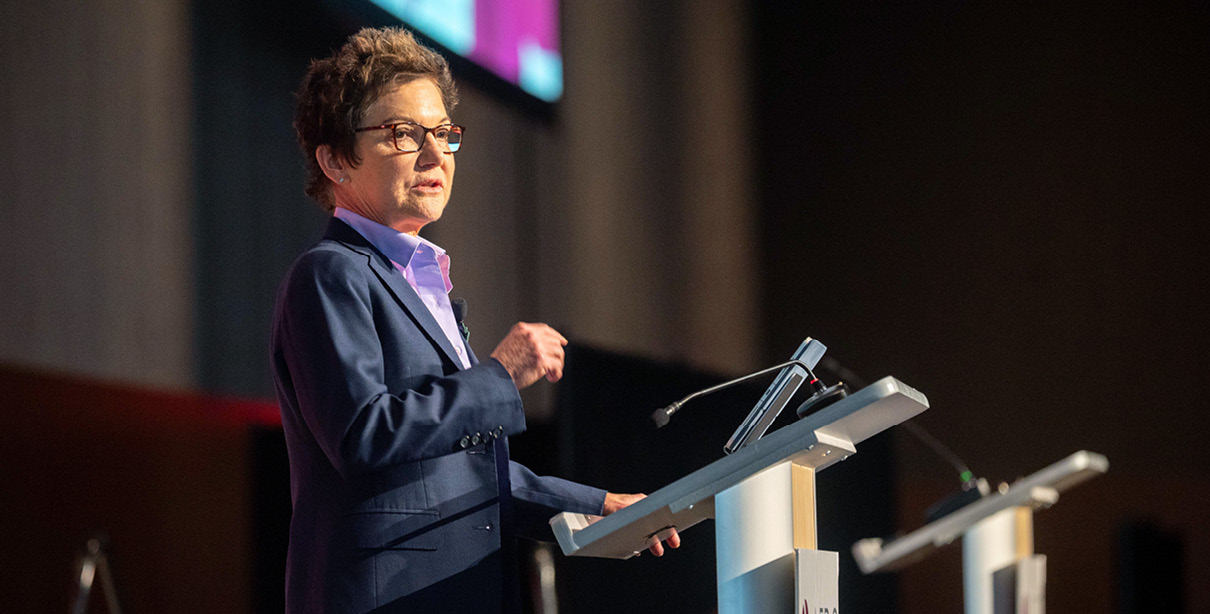Federal Reserve Bank of San Francisco President Mary C. Daly delivered remarks at the Anchorage Economic Summit on August 6, 2025, following a four-day visit to Alaska where she engaged with local business and community leaders. Reflecting on her long-standing fascination with the state’s geography and cultural resilience, Daly emphasized that Alaska’s people are its greatest asset. She expressed confidence in the state’s economic trajectory, citing abundant natural resources, geographic advantages, and a history of adaptation. Daly outlined three key elements for sustained economic development: diversification, forward-looking investment, and a mindset of belief in progress. She noted that diversification does not require abandoning core industries like resource extraction or tourism, but rather expanding into complementary sectors such as technology and renewable energy. Examples from other regions in the Twelfth District, like Oregon’s tech growth and Nevada’s data center investments, illustrate how strategic diversification fosters resilience. Daly also highlighted emerging opportunities through broadband expansion and access to generative AI, which are enabling small businesses across remote areas. She stressed that investing in workforce training and digital infrastructure is essential to unlocking these opportunities. Ultimately, Daly argued that belief in a better future drives intention, which in turn leads to investment and tangible progress—reinforcing the central role of Alaskans in shaping their economic destiny.
— news from Federal Reserve Bank of San Francisco
— News Original —
Around the District: Investing in Alaska’s Economic Future
The following is based on remarks Federal Reserve Bank of San Francisco President and CEO Mary C. Daly delivered at the Anchorage Economic Summit on August 6, 2025. President Daly met with business and community leaders during a four-day visit designed to enhance her understanding of recent developments in Alaska’s economy.
As a kid growing up in Ballwin, Missouri, I dreamed of going to Alaska someday. I liked the vastness, the connection with Canada and Asia, the history of exploration, and perhaps most of all, the resilience I thought it took to live in mostly dark in the winter and mostly light in the summer.
When I finally visited for the first time, I realized I had missed the main feature—the people. Alaska Native peoples who have been here since the beginning and generations of others who have made it their home. People collectively invested in fostering the opportunities and the communities that have come to define the place.
“My bottom line to everyone in the state: Alaska’s future is bright. It has all the ingredients for success.”
I returned in August to meet with business and community leaders, and to speak at the Anchorage Economic Summit. My bottom line to everyone in the state: Alaska’s future is bright. It has all the ingredients for success. Great natural resources, breathtaking beauty, a history of reinvention, and most importantly a rugged people. I mean rugged as a compliment. Something that endures, has grit, and ultimately delivers.
And Alaska isn’t alone. I have observed many communities across the Federal Reserve’s Twelfth District that have evolved to meet changing economic demands. While there is no single playbook or path, there are some fundamental strategies and practices that contribute to success. I will share three that have been important in other communities that have taken this journey.
The first is to diversify, a word I’ve heard frequently when I listen to people in Alaska. This does not mean abandoning the things already done well—including natural resource extraction, strategic defense, tourism, and many others. Rather, it means looking for opportunities to invest in additional industries that hedge against the ups and downs in your core sectors.
I’ve seen plenty of examples of this type of diversification across the Twelfth District. Oregon developed a more tech-oriented economy in the 1970s to offset some of the volatility in their natural resource sector. Southern Nevada is currently investing in data centers to augment their presence in tourism, gaming, and entertainment. And there are many more examples I could share. Alaskans will decide what is right for themselves, but the point is always the same. Purposeful, intentional diversification expands economic opportunity, ultimately creating durability.
And this brings me to the second strategy. Forward focus. Find things that are just beginning. A great example comes from the Alaska Small Business Development Center. They recently shared how investment in broadband, satellite-based internet, and publicly available generative artificial intelligence (GenAI) are combining to open new opportunities for businesses across the state, combining technology with people to create growth.
Of course, additional investment is needed to fully scale this technology and make it something the entire state can do. Ongoing investments in broadband and satellite-based internet, but also in people and training. As I said earlier, people are the most important asset and investing in them is investing in the economy.
And here is the final strategy, which isn’t a strategy at all. It’s a mindset. You have to believe. Believe that progress is possible. That you can craft it. And that 10 years from now, things will look different, better than they do today.
Ultimately, this is what I have learned on my travels. Belief is the foundation of anything we do. Belief leads to intention, intention leads to investment, and investment leads to progress. Which means in the end, it all comes back to the people of Alaska.
End Notes
1. Mayer (2005).
2. Temple (2025).
3. Federal Reserve Bank of San Francisco (2025).
References
Federal Reserve Bank of San Francisco. 2025. “AI in Action: Practical Strategies for Small Businesses in Alaska and Nevada.” EmergingTech Economic Research Network webinar, March 25.
Mayer, Heike. 2005. “Taking Root in the Silicon Forest: High-Technology Firms as Surrogate Universities in Portland, Oregon.” Journal of the American Planning Association 71(3), pp. 318–333.
